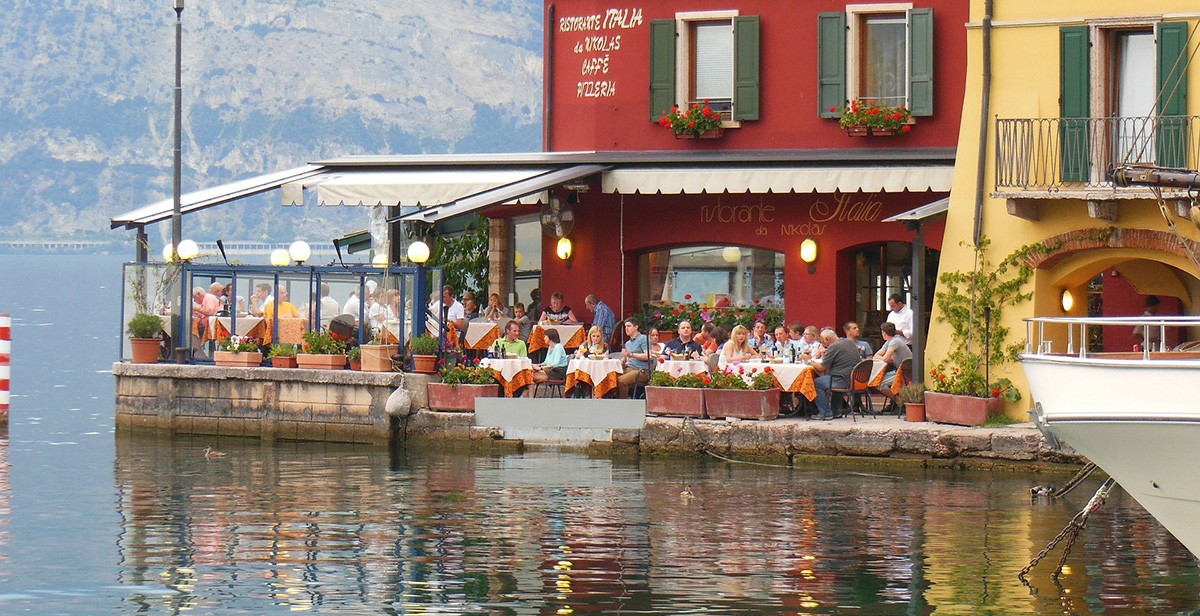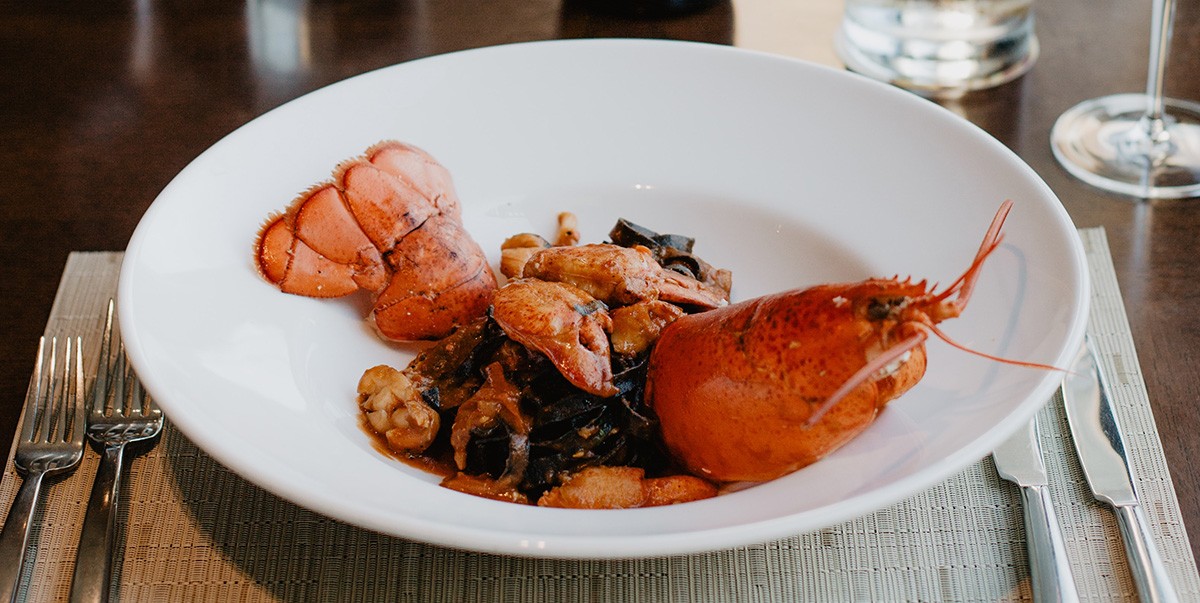Ordering food in Italian can be an enjoyable part of experiencing Italian culture, and FOODS.EDU.VN makes it simple to learn the essential phrases and vocabulary. Understanding Italian culinary terms, making special requests, and navigating dietary restrictions are all made easy with our guide, ensuring a smooth dining experience. Access authentic Italian recipes, culinary techniques, and dining etiquette tips with ease. Explore Italian gastronomy, regional cuisine, and food culture for a memorable culinary experience.
1. Understanding Italian Restaurant Types
Before diving into the vocabulary and phrases, it’s helpful to know the different types of restaurants you might encounter in Italy. This understanding can set the stage for a more informed and enjoyable dining experience.
| Restaurant Type | Description | What to Expect |
|---|---|---|
| Ristorante | Fine dining establishment | Formal atmosphere, extensive menu, higher prices |
| Pizzeria | Casual sit-down restaurant specializing in pizza | Relaxed atmosphere, wide variety of pizzas, moderate prices |
| Trattoria | Traditionally family-run restaurant serving local specialties | Cozy atmosphere, regional dishes, reasonable prices |
| Bistrot | Small, chic restaurant | Stylish decor, limited menu, slightly higher prices |
| Tavola Calda | Snack bar or diner offering small meals | Quick service, sandwiches, salads, affordable prices |
| Taverna | Informal inn, focused more on drinks than food | Relaxed vibe, simple food menu, emphasis on beverages |




2. Essential Restaurant Vocabulary in Italian
Knowing key vocabulary will help you navigate restaurant menus and communicate effectively with the staff. Let’s explore some fundamental terms.
2.1. Basic Restaurant Terms
| English | Italian | IPA | Pronunciation |
|---|---|---|---|
| Meal | Pasto | [ˈpasto] | pah-stoh |
| Dish | Piatto, pietanza | [ˈpjatto], [pjeˈtant͡sa] | pee-ah-toh, pee-eh-than-tsah |
| Delicacy | Prelibatezza | [prelibaˈtet͡tsa] | preh-lee-bah-the-tsah |
| Specialty | Specialità | [spet͡ʃaliˈta] | speh-cha-lee-tah |
| Breakfast | Colazione | [kolaˈt͡tsjone] | koh-lah-tsee-oh-neh |
| Lunch | Pranzo | [ˈprant͡so] | prahn-tsoh |
| Dinner | Cena | [ˈt͡ʃena] | cheh-nah |
| Restaurant | Ristorante | [ristoˈrante] | ree-stoh-rahn-teh |
| Pizza restaurant | Pizzeria | [pit͡tseˈria] | pee-tseh-ree-ah |
| Traditional restaurant, trattoria | Trattoria | [trattoˈria] | trah-toh-ree-ah |
| Bistrot | Bistrot | [bisˈtro] | bee-stroh |
| Diner | Tavola calda | [ˈtavola ˈkalda] | tah-voh-lah kahl-dah |
2.2. Key Personnel
| English | Italian | IPA | Pronunciation |
|---|---|---|---|
| Chef | Chef, cuoco | [ʃef], [ˈkwɔko] | sheph, koo-oh-koh |
| Pizza maker | Pizzaiolo | [pittsaˈjɔlo] | pee-tsah-ee-oh-loh |
| Waiter | Cameriere | [kameˈrjɛre] | kah-meh-ree-eh-reh |
| Waitress | Cameriera | [kameˈrjɛra] | kah-meh-ree-eh-rah |
| Host | Maître | [ˈmɛtr] | meh-thr |
2.3. Practical Terms
| English | Italian | IPA | Pronunciation |
|---|---|---|---|
| Takeaway | Da asporto | [da asˈpɔrto] | dah ah-spohr-toh |
| Table | Tavolo | [ˈtavolo] | tah-voh-loh |
| Menu | Menù | [meˈnu] | meh-noo |
| Service charge | Coperto | [koˈpɛrto] | koh-pehr-toh |
| Appetizer, starter | Antipasto | [antiˈpasto] | ahn-tee-pah-stoh |
| First course | Primo, primo piatto | [ˈprimo], [ˈprimo ˈpjatto] | pree-moh, pree-moh pee-ah-toh |
| Second course | Secondo, secondo piatto | [seˈkondo], [seˈkondo ˈpjatto] | seh-kohn-doh, seh-kohn-doh pee-ah-toh |
| Side dish | Contorno | [konˈtorno] | kohn-tohr-noh |
| Dessert | Dolce | [ˈdolt͡ʃe] | dohl-che |
| Drink | Bevanda | [beˈvanda] | beh-vahn-dah |
| Water | Acqua | [ˈakkwa] | ah-koo-ah |
| Wine | Vino | [ˈvino] | vee-noh |
FOODS.EDU.VN offers in-depth guides on Italian regional cuisine, providing detailed insights into local specialties and culinary traditions.
3. Tableware Vocabulary in Italian
Knowing the names of tableware can enhance your dining experience and make you feel more comfortable in a restaurant setting.
| English | Italian | IPA | Pronunciation |
|---|---|---|---|
| Plate | Piatto | [ˈpjatto] | pee-ah-toh |
| Glass | Bicchiere | [bikˈkjɛre] | bee-kee-eh-reh |
| Stem glass | Calice | [ˈkalit͡ʃe] | kah-lee-che |
| Knife | Coltello | [kolˈtɛllo] | kohl-teh-loh |
| Fork | Forchetta | [forˈketta] | phor-keht-tah |
| Spoon | Cucchiaio | [kukˈkjajo] | koo-kee-ah-ee-oh |
| Teaspoon | Cucchiaino | [kukkjaˈino] | koo-kee-ah-ee-noh |
| Cup | Tazza | [ˈtatt͡sa] | tah-tsah |
| Bowl | Scodella | [skoˈdɛlla] | skoh-dehl-lah |
| Salad bowl | Insalatiera | [insalaˈtjɛra] | een-sah-lah-tee-eh-rah |
| Tureen | Zuppiera | [d͡zupˈpjɛra] | tsoo-pee-eh-rah |
| Bottle | Bottiglia | [botˈtiʎʎa] | boht-tee-wlhee-ah |
| Napkin | Tovagliolo | [tovaʎˈʎolo] | toh-vah-wlhee-oh-loh |
| Tablecloth | Tovaglia | [toˈvaʎʎa] | toh-vah-wlhee-ah |
| Toothpick | Stuzzicadenti | [stutt͡sikadenˈti] | stoo-tsee-kah-dehn-tee |
4. Reserving a Table in Italian
Making a reservation is a polite and often necessary step, especially at popular restaurants. Here are useful phrases for booking a table, whether by phone or in person.
| English | Italian | IPA | Pronunciation |
|---|---|---|---|
| I would like to make a reservation for three people for Thursday evening at 8:30 pm. | Vorrei prenotare un tavolo per tre persone per giovedì sera alle ore 20:30. | [vorˈrɛi prenotaˈre un ˈtavolo per tre perˈsone per d͡ʒoveˈdi ˈsera ˈalle ˈore ˈventi e ˈtrenta] | voh-reh-ee preh-noh-tah-reh oon tah-voh-loh pehr treh pehr-soh-neh pehr joh-veh-dee seh-rah ahl-leh oh-reh vehn-tee eh trehn-tah |
| Is it possible to book a table for three people? | È possibile prenotare un tavolo per tre persone? | [ˈɛ pposˈsibile prenotaˈre un ˈtavolo per tre perˈsone] | eh poh-see-bee-leh preh-noh-tah-reh oon tah-voh-loh pehr treh pehr-soh-neh |
| Is it possible to book a table for five people in the rooftop terrace? | È possibile prenotare un tavolo per cinque persone nella terrazza panoramica? | [ˈɛ pposˈsibile prenotaˈre un ˈtavolo per ˈt͡ʃinkwe perˈsone ˈnella terˈrat͡tsa panoˈramika] | eh poh-see-bee-leh preh-noh-tah-reh oon tah-voh-loh pehr cheen-koo-eh pehr-soh-neh neh-lah tehr-rah-tsah pah-noh-rah-mee-kah |
| Hello! A table for two people please! | Salve, un tavolo per due persone, per favore! | [ˈsalve un ˈtavolo per ˈdue perˈsone per faˈvore] | sahl-veh oon tah-voh-loh pehr doo-eh pehr-soh-neh pehr phah-voh-reh |
| Hello! Do you have a table for three? | Salve, avete un tavolo per tre persone? | [ˈsalve aˈvete un ˈtavolo per tre perˈsone] | sahl-veh ah-veh-teh oon tah-voh-loh pehr treh pehr-soh-neh |
| Do you have any tables available for a group of four? | Avete un tavolo libero per quattro, per favore? | [aˈvete un ˈtavolo ˈlibero per ˈkwattro per faˈvore] | ah-veh-teh oon tah-voh-loh lee-beh-roh pehr koo-aht-troh pehr phah-voh-reh |
| Do we have to wait long for a table for two? | C’è molto da aspettare per un tavolo per due? | [ˈt͡ʃɛ ˈmolto da aspetˈtare per un ˈtavolo per ˈdue] | cheh mohl-toh dah ahs-peht-tah-reh pehr oon tah-voh-loh pehr doo-eh |
| Are dogs allowed in the restaurant? | È consentito l’accesso ai cani nel ristorante? | [ˈɛ konsenˈtito latˈt͡ʃɛsso ai ˈkani nel ristoˈrante] | eh kohn-sehn-tee-toh lah-chehs-soh ahee kah-nee nehl ree-stoh-rahn-teh |
| I made a reservation for two people under the name Francesco Beltramini. | Ho prenotato un tavolo per quattro persone a nome Francesco Beltramini. | [ˈɔ prenotaˈto un ˈtavolo per ˈkwattro perˈsone a ˈnome franˈt͡ʃesko beltraˈmini] | oh preh-noh-tah-toh oon tah-voh-loh pehr koo-aht-troh pehr-soh-neh ah noh-meh frahn-che-skoh behl-trah-mee-nee |
| There are four of us. | Siamo in quattro. | [ˈsjamo in ˈkwattro] | see-ah-moh een koo-aht-troh |
FOODS.EDU.VN provides practical tips on Italian dining etiquette, helping you navigate social situations with confidence.
5. Ordering Food in Italian: Essential Phrases
Once you’re seated, it’s time to order. Here are essential phrases for browsing the menu, asking for recommendations, and placing your order.
| English | Italian | IPA | Pronunciation |
|---|---|---|---|
| Can I see the menu, please? | Posso vedere il menù, per favore? | [ˈpɔsso vedeˈre il meˈnu per faˈvore] | pohs-soh veh-deh-reh eel meh-noo pehr phah-vo-reh |
| What do you recommend? | Che cosa ci consiglia? | [ˈke ˈkɔza t͡ʃi konˈsiʎʎa] | keh koh-sah chee kohn-see-wlhee-ah |
| What are your specialties? | Quali sono le specialità della casa? | [ˈkwali ˈsono le spet͡ʃaliˈta ˈdella ˈkaza] | koo-ah-lee soh-noh leh speh-cha-lee-tah dehl-lah kah-sah |
| What are the specials of the day? | Quali sono i piatti del giorno? | [ˈkwali ˈsono i ˈpjatti del ˈd͡ʒorno] | koo-ah-lee soh-noh ee pee-ah-the dehl johr-noh |
| Is there a local specialty? | C’è una specialità locale? | [ˈt͡ʃɛ ˈuna spet͡ʃaliˈta loˈkale] | che oo-nah speh-cha-lee-tah loh-kah-leh |
| What’s the Genoese pesto sauce made with? | Cosa c’è nel pesto alla genovese? | [ˈkɔza ˈt͡ʃɛ nel ˈpɛsto ˈalla d͡ʒenoˈveze] | koh-sah che nehl pehs-toh ahl-lah jeh-noh-veh-seh |
| I’ll have the… | Io prendo… | [ˈio ˈprɛndo] | ee-oh prehn-doh |
| I’ll have the… | Per me… | [per ˈme] | pehr meh |
| I’ll have the… | Vorrei… | [vorˈrɛi] | vohr-reh-ee |
| I’ll have a well done steak. | Io prendo una bistecca ben cotta, per favore. | [ˈio ˈprɛndo ˈuna bisˈtekka ˈbɛn ˈkɔtta per faˈvore] | ee-oh prehn-doh oo-nah bee-steh-kah behn koht-tah pehr phah-voh-reh |
| I’ll have a medium beefsteak. | Io prendo una bistecca di manzo a cottura media. | [ˈio ˈprɛndo ˈuna bisˈtekka di ˈmant͡so a kotˈtura ˈmɛdja] | ee-oh prehn-doh oo-nah bee-steh-kah dee mahn-tsoh ah koht-too-rah meh-dee-ah |
| I’ll have a rare Florentine steak. | Io prendo una bistecca Fiorentina al sangue. | [ˈio ˈprɛndo ˈuna bisˈtekka fjorenˈtina al ˈsanɡwe] | ee-oh prehn-doh oo-nah bee-steh-kah phee-oh-rehn-tee-nah ahl sahn-goo-eh |
| A bottle of water for the table, please. | Acqua naturale, per favore. | [ˈakkwa natuˈrale per faˈvore] | ah-koo-ah nah-too-rah-leh pehr phah-voh-reh |
| May I please order a bottle of white wine? | È possibile ordinare una bottiglia di vino bianco? | [ˈɛ pposˈsibile ordinaˈre ˈuna botˈtiʎʎa di ˈvino ˈbjanko] | eh poh-see-bee-leh ohr-dee-nah-reh oo-nah boht-tee-wlhee-ah dee vee-noh bee-ahn-koh |
| Which wines do you recommend? | Che vini ci consiglia? | [ˈke ˈvini t͡ʃi konˈsiʎʎa] | keh vee-nee chee kohn-see-wlhee-ah |
| Do you have vegetarian options? | Avete piatti vegetariani? | [aˈvete ˈpjatti ved͡ʒetaˈrjani] | ah-veh-the pee-ah-tee veh-jeh-tah-ree-ah-nee |
| Do you have vegan options? | Avete piatti vegani? | [aˈvete ˈpjatti veˈɡani] | ah-veh-the pee-ah-tee veh-gah-nee |
5.1. Dietary Restrictions and Allergies
It’s crucial to communicate any dietary needs clearly to ensure a safe and enjoyable meal.
| English | Italian | IPA | Pronunciation |
|---|---|---|---|
| I’m a vegetarian. | Sono vegetariano. / Sono vegetariana. | [ˈsono ved͡ʒetaˈrjano] / [ˈsono ved͡ʒetaˈrjana] | soh-noh veh-jeh-tah-ree-ah-noh / soh-noh veh-jeh-tah-ree-ah-nah |
| I’m vegan. | Sono vegano. / Sono vegana. | [ˈsono veˈɡano] / [ˈsono veˈɡana] | soh-noh veh-gah-noh / soh-noh veh-gah-nah |
| I’m allergic to… | Sono allergico a… / Sono allergica a… | [ˈsono alˈlɛrd͡ʒiko a] / [ˈsono alˈlɛrd͡ʒika a] | soh-noh ahl-lehr-jee-koh ah / soh-noh ahl-lehr-jee-kah ah |
| I have a severe food allergy to… | Ho una grave allergia alimentare a… | [ˈɔ ˈuna ˈɡrave allerˈd͡ʒia alimentaˈre a] | oh oo-nah grah-veh ahl-lehr-jee-ah ah-lee-mehn-tah-reh ah |
| I can’t eat dishes that contain… | Non posso mangiare cibi che contengono… | [ˈnon ˈpɔsso manˈd͡ʒare ˈt͡ʃibi ke konˈtenɡono] | nohn pohs-soh mahn-jah-reh chee-bee keh kohn-tehn-goh-noh |
| I have celiac disease. | Sono celiaco. / Sono celiaca. | [ˈsono t͡ʃeˈljako] / [ˈsono t͡ʃeˈljaka] | soh-noh che-lee-ah-koh / soh-noh che-lee-ah-kah |
| I’m lactose intolerant. | Sono intollerante al lattosio. | [ˈsono intolleˈrante al latˈtɔzjo] | soh-noh een-tohl-leh-rahn-teh ahl lath-toh-see-oh |
5.2. Compliments and Asking for the Bill
| English | Italian | IPA | Pronunciation |
|---|---|---|---|
| That was delicious! | Era tutto buonissimo! | [ˈɛra ˈtutto bwoˈnisimo] | eh-rah toot-toh boo-oh-nee-see-moh |
| Compliments to the chef! | I miei complimenti allo chef! | [i ˈmjɛi kompliˈmenti ˈallo ʃef] | ee mee-eh-ee kohm-plee-mehn-tee ahl-loh sheph |
| Could I please have the bill? | Posso avere il conto, per favore? | [ˈpɔsso aˈvere il ˈkonto per faˈvore] | pohs-soh ah-veh-reh eel kohn-toh pehr pha-voh-reh |
| The bill, please. | Il conto, per favore. | [il ˈkonto per faˈvore] | eel kohn-toh pehr pha-voh-reh |
| Can we have separate bills? | Possiamo avere un conto separato? | [posˈsjamo aˈvere un ˈkonto sepaˈrato] | pohs-see-ah-moh ah-veh-reh oon kohn-toh seh-pah-rah-toh |
FOODS.EDU.VN offers detailed articles on Italian wines, including regional varieties and food pairing suggestions.
6. Understanding Italian Restaurant Staff
Understanding what the waitstaff might say can improve your dining experience and ensure smooth communication. Here are some common phrases you might hear.
| English | Italian | IPA | Pronunciation |
|---|---|---|---|
| How many are in your party? | Quanti siete? / Quante persone siete? | [ˈkwanti ˈsjete] / [ˈkwante perˈsone ˈsjete] | koo-ahn-tee see-eh-teh / koo-ahn-tee pehr-soh-neh see-eh-teh |
| Do you have a reservation? | Ha prenotato? | [a prenotaˈto] | ah preh-noh-tah-toh |
| What would you like to drink? | Cosa porto da bere? | [ˈkɔza ˈpɔrto da ˈbere] | koh-sah pohr-toh dah beh-reh |
| To drink? | Da bere? | [da ˈbere] | dah beh-reh |
| What would you like to eat? | Che cosa vi porto? | [ˈke ˈkɔza vi ˈpɔrto] | keh koh-sah vee pohr-toh |
| Are you ready to order? | Siete pronti per ordinare? | [ˈsjete ˈpronti per ordinaˈre] | see-eh-the prohn-tee pehr ohr-dee-nah-reh |
| Would you like to hear the daily specials? | Desidera che Le illustri le specialità del giorno? | [deˈzidera ke le ilˈlustri le spet͡ʃaliˈta del ˈd͡ʒorno] | deh-see-deh-rah keh leh ehl-loo-stree leh speh-cha-lee-tah dehl johr-noh |
| Would you like to see the wine list? | Volete che vi porti la carta dei vini? | [voˈlete ke vi ˈpɔrti la ˈkarta dei ˈvini] | voh-leh-teh keh vee pohr-tee lah kahr-tah deh-ee vee-nee |
| That’s a very good choice! | Ottima scelta! | [ˈɔttima ˈʃelta] | oht-tee-mah shel-tah |
| I’ll bring a bowl of water for your dog. | Le porto subito una ciotola con dell’acqua per il cane. | [le ˈpɔrto ˈsubito ˈuna ˈt͡ʃɔtola kon delˈlakkwa per il ˈkane] | leh pohr-toh soo-bee-toh oo-nah cho-toh-lah kohn dehl ah-koo-ah pehr eel kah-neh |
| Would you like a high-chair? | Serve un seggiolone? | [ˈsɛrve un sed͡ʒd͡ʒoˈlone] | sehr-veh oon seh-joh-loh-neh |
| How is your meal? | Com’era? | [koˈmɛra] | kohm-eh-rah |
| Was it good? | Andava bene? | [anˈdava ˈbene] | ahn-dah-vah beh-neh |
| Enjoy your meal! | Buon appetito! | [ˈbwɔn appeˈtito] | boo-ohn ahp-peh-tee-toh |
7. Restaurant Menu in Italian: Food Vocabulary
Understanding food categories and ingredients is essential for making informed choices from an Italian menu.
7.1. Basic Food Groups
| English | Italian | IPA | Pronunciation |
|---|---|---|---|
| Pasta | Pasta | [ˈpasta] | pah-stah |
| Bread | Pane | [ˈpane] | pah-neh |
| Rice | Riso | [ˈrizo] | ree-soh |
| Cereals | Cereali | [t͡ʃereˈali] | che-reh-ah-lee |
| Vegetables | Ortaggi, verdure | [orˈtad͡d͡ʒi], [verˈdure] | ohr-tah-jee, vehr-doo-reh |
| Legumes | Legumi | [leˈɡumi] | leh-goo-mee |
| Fruits | Frutta | [ˈfrutta] | phroo-tah |
| Dried fruits | Frutta secca | [ˈfrutta ˈsekka] | phroo-tah seh-kah |
| Eggs | Uova | [ˈwɔva] | oo-oh-vah |
| Meat | Carne | [ˈkarne] | kahr-neh |
| Burger | Hamburger, svizzera | [amˈburɡer], [ˈzvittsera] | ahm-boor-ghehr, svee-tseh-rah |
| Fish | Pesce | [ˈpeʃʃe] | peh-sheh |
| Spices | Spezie | [ˈspɛtt͡sje] | speh-tsee-eh |
| Seasonings | Condimenti | [kondiˈmenti] | kohn-dee-mehn-tee |
| Dairy products | Latticini | [lattiˈt͡ʃini] | laht-tee-chee-nee |
| Milk | Latte | [ˈlatte] | laht-teh |
| Cheese | Formaggio | [forˈmad͡d͡ʒo] | phor-mah-joh |
| Salad | Insalata | [insaˈlata] | een-sah-lah-tah |
| Soup | Minestra, zuppa | [miˈnɛstra], [ˈd͡zuppa] | mee-nehs-strah, tsoop-pah |
| Sauce | Sugo | [ˈsuɡo] | soo-ghoh |
| Dip | Salsa | [ˈsalsa] | sahl-sah |
| Sandwich | Panino | [paˈnino] | pah-nee-noh |
7.2. Types of Pasta Noodles
Italian cuisine is renowned for its diverse pasta varieties. Here’s a guide to common pasta types you’ll find on menus.
| Italian | Description | IPA | Pronunciation |
|---|---|---|---|
| Spaghetti | Long strands of pasta. | [spaˈɡetti] | spah-ghet-tee |
| Fettuccine | Pasta in the form of narrow ribbons. | [fettuˈt͡ʃːine] | pheht-too-chee-neh |
| Linguine | Narrow flat pasta. | [linˈɡwine] | leen-goo-ee-neh |
| Maccheroni | Short tubes of pasta. | [makkeˈroni] | mah-keh-roh-nee |
| Ravioli | Small envelopes of pasta containing minced meat, cheese or vegetables. | [raˈvjɔli] | rah-vee-oh-lee |
| Tortellini | Pasta in the form of little ring-shaped cases containing meat or cheese. | [torteˈllini] | tohr-tehl-lee-nee |
| Tagliatelle | Thin, long strips of pasta. | [taʎʎaˈtɛlle] | tah-wlhee-ah-tehl-leh |
| Tagliolini | A type of ribbon pasta. | [taʎʎoˈlini] | tah-wlhee-oh-lee-nee |
| Penne | A type of pasta in the shape of tubes. | [ˈpenne] | pehn-neh |
| Fusilli | Spiral-shaped pasta. | [fuˈzilli] | phoo-seel-lee |
| Orecchiette | Small oval pasta. | [orekˈkjɛtte] | oh-reh-kee-eh-teh |
| Gnocchi | Small round balls made out of potatoes. | [ˈɲɔkki] | nyo-kee |
| Cannelloni | Boiled tube-shaped pasta filled with a meat, fish, cheese, or vegetable mixture. | [kannelˈloni] | kahn-nehl-loh-nee |
foods.edu.vn provides recipes for authentic Italian sauces to pair with your favorite pasta.
7.3. Meats in Italian
| English | Italian | IPA | Pronunciation |
|---|---|---|---|
| Chicken | Pollo | [ˈpollo] | pohl-loh |
| Turkey | Tacchino | [takˈkino] | tah-kee-noh |
| Poultry | Pollame | [polˈlame] | pohl-lah-meh |
| Beef | Manzo | [ˈmant͡so] | mahn-tsoh |
| Veal | Vitello | [viˈtɛllo] | vee-tehl-loh |
| Pork | Maiale, carne suina | [maˈjale], [ˈkarne ˈswina] | mah-ee-ah-leh, kahr-neh soo-ee-nah |
| Lamb | Agnello | [aɲˈɲɛllo] | ahn-yehl-loh |
| Rabbit | Coniglio | [koˈniʎʎo] | koh-nee-wlhee-oh |
| Deer | Cervo | [ˈt͡ʃɛrvo] | cher-voh |
| Steak | Bistecca | [bisˈtekka] | bee-steh-kah |
| Meatball | Polpetta | [polˈpetta] | pohl-peht-tah |
| Stew | Stufato, spezzatino | [stuˈfato], [spettsaˈtino] | stoo-pha-toh, speh-tsah-tee-noh |
| Roast beef | Arrosto di manzo | [arˈrɔsto di ˈmant͡so] | ahr-roh-stoh dee mahn-tsoh |
| Cold cuts | Affettato | [affetˈtato] | ah-pheh-tah-toh |
| Ham | Prosciutto | [proʃˈʃutto] | proh-shoo-toh |
| Sausage | Salsiccia | [salˈsit͡ʃːa] | sahl-see-cha |
| Ribs | Costolette | [kostoˈlette] | koh-stoh-leh-teh |
| Salami | Salame | [saˈlame] | sah-lah-meh |
7.4. Italian Names for Fish and Seafood
| English | Italian | IPA | Pronunciation |
|---|---|---|---|
| Seafood | Frutti di mare | [ˈfrutti di ˈmare] | phroo-tee dee mah-reh |
| Salmon | Salmone | [salˈmone] | sahl-moh-neh |
| Cod | Merluzzo | [merˈlut͡tso] | mehr-loo-tsoh |
| Lobster | Aragosta, astice | [araˈɡɔsta], [ˈastit͡ʃe] | ah-rah-gho-stah, ah-stee-cheh |
| Squid | Calamaro | [kalaˈmaro] | kah-lah-mah-roh |
| Sardine | Sardina | [sarˈdina] | sahr-dee-nah |
| Anchovy | Acciuga | [atˈt͡ʃuɡa] | ah-choo-ghah |
| Clam | Vongola | [ˈvoŋɡola] | vohn-ghoh-lah |
| Shrimp | Gambero, gamberetto | [ˈɡambero], [ɡambeˈretto] | gham-beh-roh, gham-beh-reh-toh |
| Mussel | Cozza | [ˈkɔtt͡sa] | koh-tsah |
| Oyster | Ostrica | [ˈɔstrika] | oh-stree-kah |
| Octopus | Polpo | [ˈpolpo] | pohl-poh |
| Swordfish | Pesce spada | [ˈpeʃʃe ˈspada] | peh-she spah-dah |
| Mackerel | Sgombro | [ˈzɡombro] | sghohm-broh |
| Eel | Anguilla | [aŋˈɡwilla] | ahn-goo-ee-lah |
7.5. Spices and Seasonings in Italian
| English | Italian |
